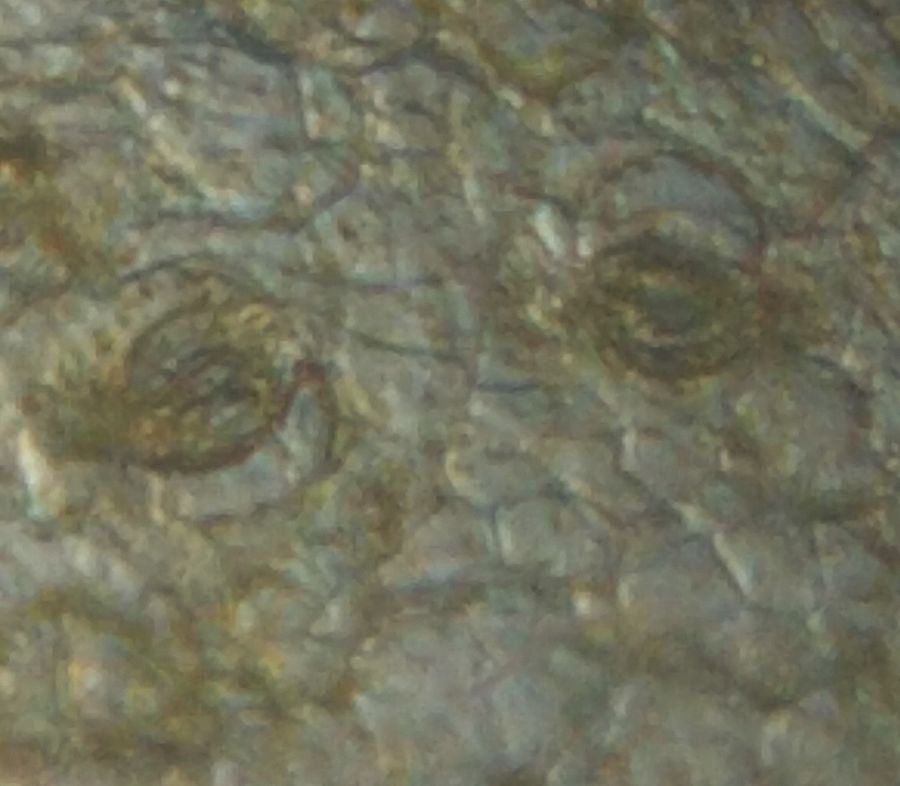Bringing Frugal-Science tools to Ayurveda, AIIMS, Delhi
 Dec 30, 2015 • 11:52 AM UTC
Dec 30, 2015 • 11:52 AM UTC Unknown Location
Unknown Location 140x Magnification
140x Magnification Microorganisms
Microorganisms
laksiyer
Human observer of life. https://sukshmadarshin.wordpress.com
97posts
1255comments
5locations

Ayurveda is one of the most ancient systems of medicine and is widely practiced in the Indian subcontinent. The practitioners are known as Vaidyas and there have been several treatises written on it, and several translated into other languages from times of hoary antiquity. The primeval medical text is the Atharva Veda which is about 4000 years old and then come the four great texts, Sushruta samhita, Charaka Samhita, Kashyapa samhita and AShTanga hrdayaa, of which the oldest the Sushruta Samhita is perhaps over 2500 years old.
Ayurvedic texts often have generations of records that are only accessible to those who can read the language in which they are written. While I have seen that it is often maligned as pseudoscience or protoscience, a careful study of the Ayurvedic pharmacopoeia and some of the best medical practitioners today shows that it is fairly nuanced, and has undergone natural selection based on these generations of records. I have personally benefited from treatments for diseases that are generally considered un-treatable by Western medicine. A large population in India use Ayurvedic treatments as it is accessible and cheap compared to the Western counterpart.
On finishing up all the workshops, I had the pleasure of visiting Dr. RamA Jayasundar at the famous All India Institutes of Medical Sciences. RamA Jayasundar is a faculty in the Department of NMR. Apart from her training as an NMR physicist (PhD, Cambridge University, UK), she is also a professionally qualified and trained Ayurvedic physician. While most of her research is centered around using NMR for Ayurveda, she is also into building and using frugal science tools. She built India’s first low cost NMR RF-coil and is very interested in using frugal-science tools for diagnosis and quality control in Ayurveda.
Ayurvedic texts often have generations of records that are only accessible to those who can read the language in which they are written. While I have seen that it is often maligned as pseudoscience or protoscience, a careful study of the Ayurvedic pharmacopoeia and some of the best medical practitioners today shows that it is fairly nuanced, and has undergone natural selection based on these generations of records. I have personally benefited from treatments for diseases that are generally considered un-treatable by Western medicine. A large population in India use Ayurvedic treatments as it is accessible and cheap compared to the Western counterpart.
On finishing up all the workshops, I had the pleasure of visiting Dr. RamA Jayasundar at the famous All India Institutes of Medical Sciences. RamA Jayasundar is a faculty in the Department of NMR. Apart from her training as an NMR physicist (PhD, Cambridge University, UK), she is also a professionally qualified and trained Ayurvedic physician. While most of her research is centered around using NMR for Ayurveda, she is also into building and using frugal science tools. She built India’s first low cost NMR RF-coil and is very interested in using frugal-science tools for diagnosis and quality control in Ayurveda.

Since much of the pharmacopoeia involves plants, RamA, her graduate student Som (appropriately named after the most revered plant of ancient times) and I decided to image stomata from a Euphorbia leaf. It took off on a discussion on how we could use the Foldscope for QC. Perhaps we could study secretory glands, trichomes and correlate with efficacy, geographical differences, and seasonal variations in medicinal plants?
Since features of the skin are also used for the extensive diagnosis (chikitsa), we played around with imaging skin with a foldscope. I chose the finger tip for the reflected microscopy, although I should have chosen some other part.
Of course this resulted in tremendous excitement too for skin turgor and properties are very carefully studied.. Unfortunately, time was too short and I had to leave, else we could have had more fun imaging and brainstorming.
Sign in to commentNobody has commented yet... Share your thoughts with the author and start the discussion!

 0 Applause
0 Applause 0 Comments
0 Comments_300x300.jpeg)

















